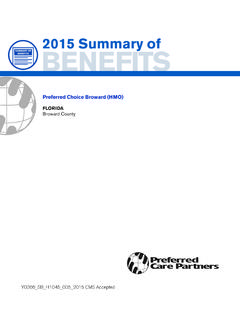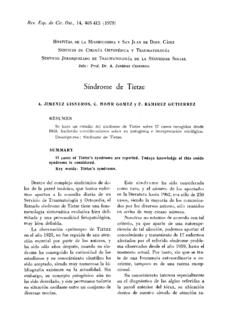Transcription of HANDBOOK PDF file created by UC Davis; California ...
1 CATFISH FARMER'S HANDBOOK CATFISH FARMER'S HANDBOOK This HANDBOOK gives the basic information new catfish farmers need to get through their first production season with minimum problems. Although there is no guarantee against a catastrophic loss, the new catfish farmer can certainly reduce the chances of such a loss by following the production methods outlined. The information is presented in outline form with few technical details on why something will or will not work. If you need additional or more technical information on a specific subject, refer to the section "Suggested Reading" for a list of books, articles, bulletins, and other publications on catfish farming. Catfish farming is much more than just stocking a pond with fish, feeding them, and then reaping the profits a few months later. It requires a large investment and carries a high risk. Intensive catfish culture requires management almost 24 hours a day during most of the year, and unless you are willing to provide this type of management, you should look at another type of enterprise.
2 The information provided in this HANDBOOK pertains primarily to the culture of channel catfish (lctalurus punctatus). However, much of it can also be used in the production of other species of catfish. Page List of FISH Types of List of Symptoms or clinical DISEASE INVESTMENT Calculations of treatment Investment per Chemicals and Other information Items WHAT TO DO IS FISH GET SITE
3 PROCEDURES TO FOLLOW IN CASE OF Soil SUSPECTED PESTICIDE-CAUSED FISH Geographical OFF Water availability ..5 CONTROL OF UNDESIRABLE FISH Pipe and power Complete eradication of all Selective removal of scale POND AQUATIC WEED Levee Steps to follow for aquatic weed Freeboard and Custom Farmer PRODUCTION OF FOOD Stocking rates, size and Processing Live Record Local stores and Backyard WATER Fee Physical SUGGESTED CATFISH COMPUTER Total Total Contents i List of Tables Table 1.
4 Surface areas of water in commercial catfish production in the United States In Table 2. Time in hours required to pump different volumes of water in acre feet at Four different pumping Table 3. Capacity in days of feed of two sizes of bulk storage feed bins for three farm Sizes and two feeding rates per Table 4. Cost of feed in cents to produce a 1 lb catfish at different feed conversions And Table 5. Average weight of channel catfish fingerlings for different Table 6. Feeding guide based on average expected gains with a feed conversion of at a stocking rate of 1,000 5-inch fingerlings per Table 7. Feeding guide based on average expected gains with a feed conversion of at a stocking rate of 1,000 5-inch fingerlings per Table 8.
5 Feeding guide based on average expected gains with a feed conversion of at a stocking rate of 1,000 7-inch fingerlings per Table 9. Feeding guide based on average expected gains with a feed conversion of at a stocking rate of 1,000 7-inch fingerlings per Table 10. Solubility of oxygen in parts per million (ppm) in fresh water at various Temperatures and at a pressure of 760 mm Hg (sea level)..15 Table 11. Fraction of un-ionized ammonia in aqueous solutions at different pH values and Table 12. Conversion for units of Table 13. Conversion of units of Table 14. Conversion of units of Table 15. Miscellaneous conversion Table 16. Weight of chemical that must be added to one unit of volume of water to give one part per million (ppm) (conversion factors).
6 23 Table 17. Conversion for parts per million, proportion and Table 18. Pounds of active chemical needed to give desired concentrations in ppm per specific volume in acre Table 19. Grams of active chemical needed to give desired concentrations in ppm per specific volume in cubic Table 20. Grams of active chemical needed to give desired concentrations in ppm per specific volume in Table 21. Grams of active drug needed per 100 pounds of feed at various feeding Levels and treatment ii List of Figures Figure 1. Catfish pond Figure 2. 24-hour oxygen cycle in Figure 3. Graphic method of predicting nighttime oxygen depletions in catfish Figure 4. Graphic method of predicting nighttime oxygen depletions in catfish Figure 5.
7 Graphic method of predicting nighttime oxygen depletions in catfish Figure 6. 24-hour pH Figure 7. Nitrogen History of Farm Raised Catfish The first efforts at raising catfish were made in the early 1900's at several federal and state fish hatcheries. In the 1950's commercial catfish farming first started in Kansas and Arkansas. Much of the information used by the early catfish farmers in the 1950's and 60's was provided by Dr. H. S. Swingle and his co-workers at Auburn University. By 1965, there were over 7,000 acres of commercial catfish ponds in Arkansas, along with acreage in Louisiana, Texas, Alabama, Georgia, Oklahoma, and Kansas. The first pond built in Mississippi specifically for the commercial production of channel catfish was in Sharkey County by W. T. "Billy" McKinney and Raymond Brown. This pond covered 40 acres and was filled and stocked that summer.
8 It was partially harvested in January 1966, and 10,000 pounds of catfish were sold to a processor in Kaw, Kansas. From this inauspicious beginning, commercial catfish farming in Mississippi grew rapidly. Mississippi quickly became the leader in this new agricultural enterprise. Table 1 breifly summarizes the acreage of commercial catfish ponds by state as of December 1986. Table 1. Surface acres of water in commercial catfish production in the United States in 1986 State Acres of Water Alabama 14,500 Arkansas 8,414 California 2,300 Florida 254 Georgia 6,000 Idaho 120 Kansas 1,790 Kentucky 200 Louisiana 5,700 Mississippi 85,139 Missouri 2,500 North Carolina 50 Oklahoma 1,240 South Carolina 250 Tennessee 4,000 Texas 700 Total 133,157 ACRES 1 Investment Required The investment required per acre to get into catfish farming varies depending on factors such as these: 1.
9 Do you own or will you buy the land? 2. Who will do the construction work, you or a con tractor? 3. The amount of dirt that must be moved. 4. The depth and size of the well(s) needed. 5. Do you own or will you have to buy equipment such as tractors, boats, motors and trucks for use on the farm? Other information on the economics of producing catfish is contained in two publications available from your County Agent or the Extension Wildlife and Fisheries Department, Mississippi State University: 1. Giachelli, J. W., R. E. Coats, Jr., and J. E. Waldrop. 1982. Mississippi Farm-Raised Catfish January 1982 Cost of Production Estimates. Mississippi State University MAFES Agriculture Economics Research Rep. No. 134, 41 pp. 2. Giachelli, J. W. and J. E. Waldrop. 1983. Cash Flows Associated with Farm-Raised Catfish Production. Mississippi State University, Agricult.
10 Econ. Tech. Publ. No. 46, 37 pp. Items Needed Put in your estimated cost, if any, for the items listed below. Since the costs will vary, you must determine what is needed for your situation and what its cost will be. Estimated Cost 1. Land reduce erosion problems. Type of vegeta- Only about 85 percent will be water; the tion to seed depends on soil type and rest will be in levees, storage buildings, climate in your area. Lime and fertilizer drains, etc. may be required.







